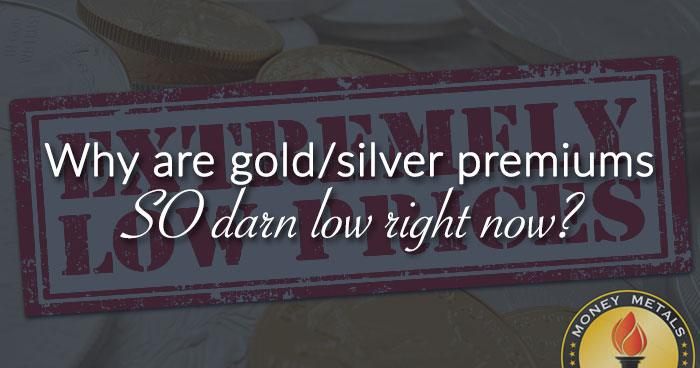The bullion markets have undergone a shift in recent months. Prices may be range-bound, but there has been a transition from a seller’s market to a buyer’s market. Our goal, as always, is to keep our readers and clients apprised of developments and answer your questions.
Question: Why don’t spot prices for gold and silver respond to bullish news events or fundamentals in the physical market?
Answer: Physical supply and demand don’t necessarily impact the “spot” prices for gold and silver set in the futures markets on a day-to-day basis.
Take a hypothetical situation where some geopolitical event has investors running for safety. Lots of people decide to buy gold. Unfortunately, many of these investors will foolishly turn to gold futures.
As demand spikes in the futures markets, the bullion banks stand ready to meet the new demand with freshly printed digital contracts. This new supply of gold derivatives is scooped up by eager buyers even though not a single physical bar is added to any inventory. Their digital receipt which purports to represent gold is, in fact, almost completely unbacked.
The geopolitical event may drive plenty of demand, but the impact on price will be muted, and perhaps eliminated entirely.
Question: I noticed that premiums have fallen significantly compared to two years ago. Why has this occurred?

Answer: When demand for coins, rounds, and bars outstrips the physical inventory held by dealers, premiums will start rising as dealers bid aggressively for inventory.
This dynamic drove premiums sharply higher a number of times between 2008 and 2016. This part is telling; the futures markets can, and often do, signal the exact opposite of what is happening in the bullion markets where supply and demand are actually balanced through price. Between 2011 and 2015, spot prices were in decline, but that was a period of unprecedented demand for physical coins, rounds, and bars.
Today, this dynamic is working in reverse. Retail bullion investors in the U.S. (but not worldwide) have been more inclined to sell.
They seem optimistic that President Donald Trump and his policies will solve many problems. Some are frustrated by the returns in the metals markets and seek better performance elsewhere. Dealers are buying lots more inventory from the retail public than they did a couple of years back, and this glut in supply has caused premiums to fall as a result.
We view this period of relatively low spot prices AND extraordinarily low premiums on physical gold and silver items as the best sort of environment to buy, not sell. But for those wishing to sell, Money Metals also offers the best prices.

About the Author:
Clint Siegner is a Director at Money Metals Exchange, a precious metals dealer recently named "Best in the USA" by an independent global ratings group. A graduate of Linfield College in Oregon, Siegner puts his experience in business management along with his passion for personal liberty, limited government, and honest money into the development of Money Metals' brand and reach. This includes writing extensively on the bullion markets and their intersection with policy and world affairs.





